Jacob Lawrence: The Migration Series
An epic series of paintings about conflict and struggle, power and beauty
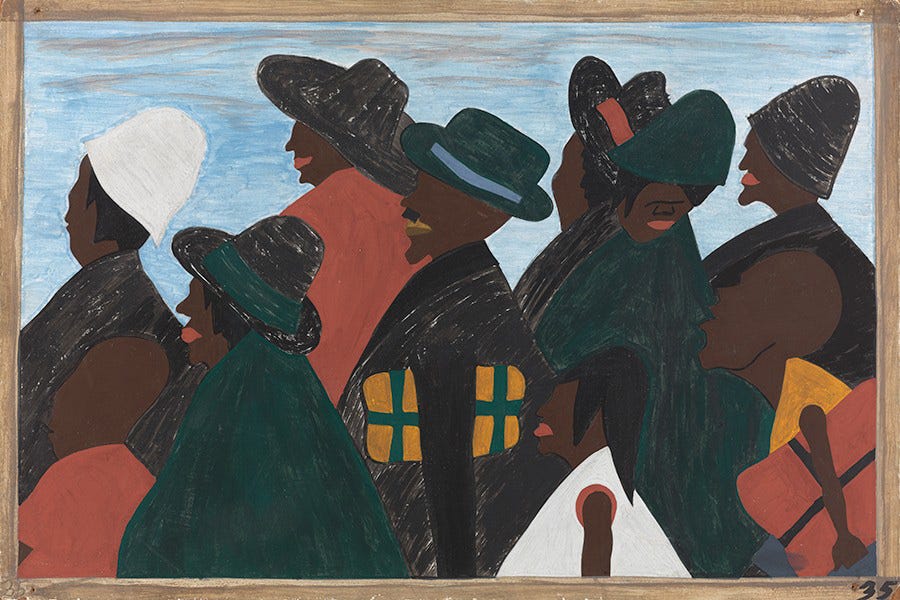
A griot is a storyteller. Popular in West Africa, they are a repository of oral traditions, family histories and family struggles. Griots also travel internationally to sing and play the kora sharing these stories. Jacob Lawrence (1917 - 2000) was a modern day griot who used his paintbrush as his instrument, sharing the heroic stories of migration.
In 1940, at the age of 23, Lawrence completed an ambitious 60-panel set of narrative paintings, now called The Migration Series, that portrayed the movement of over a million African Americans from the rural South to the urban North after World War I.
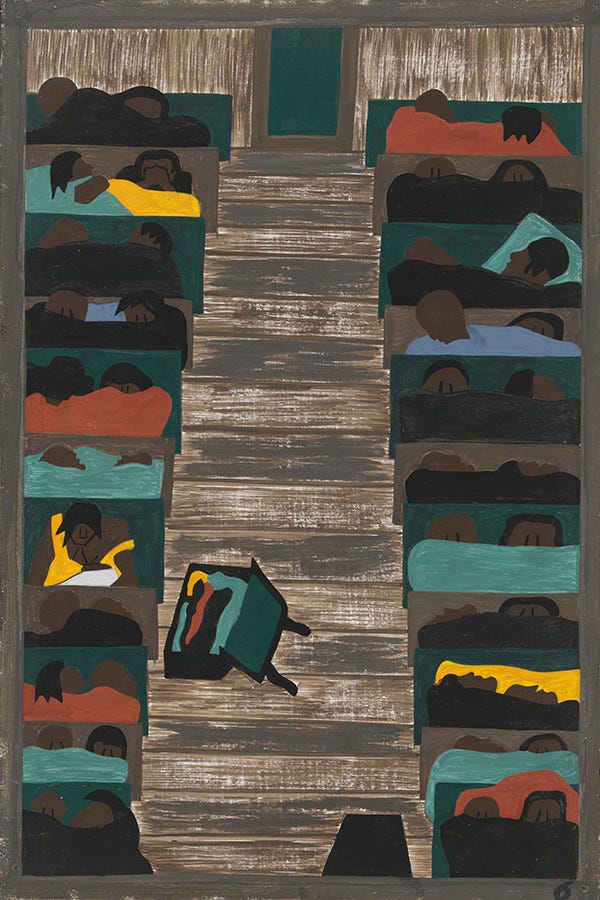
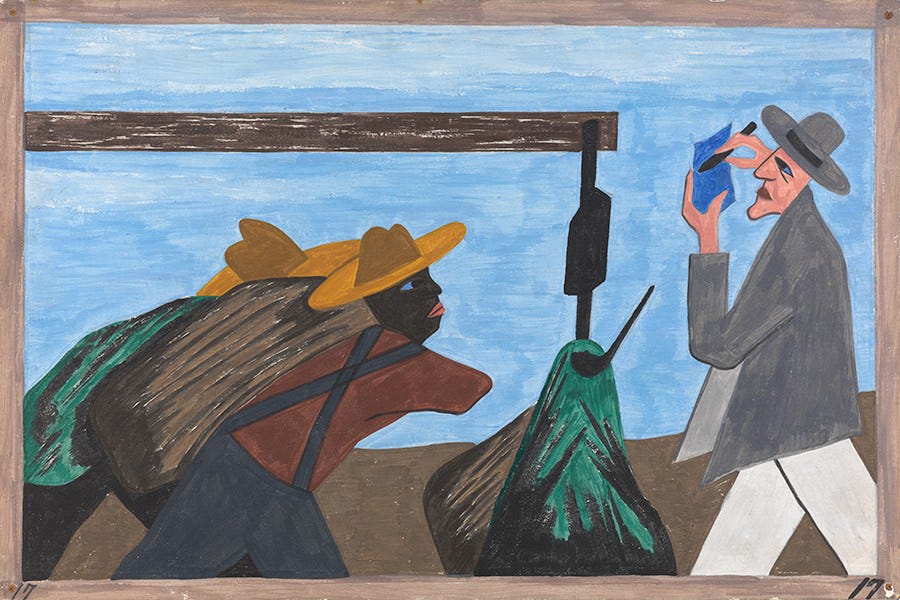
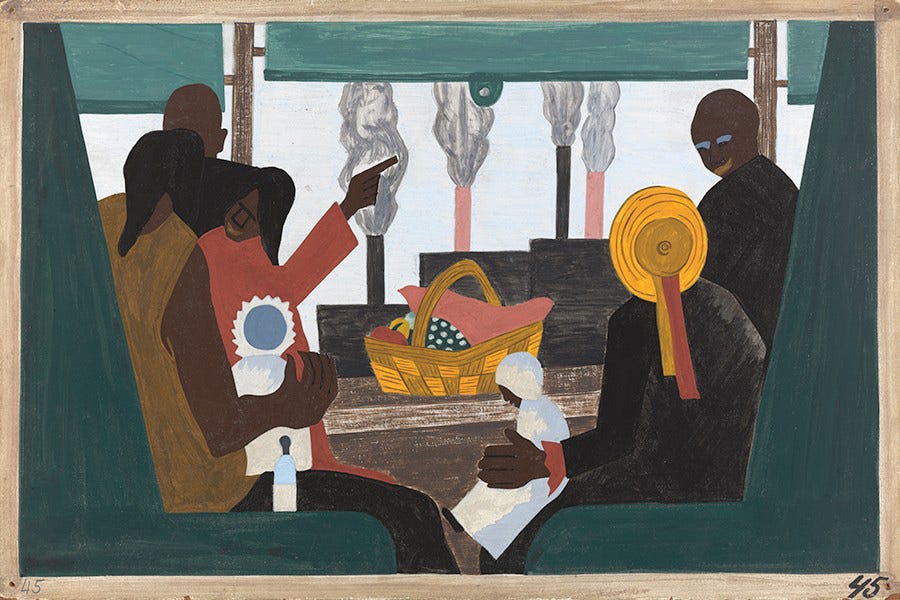
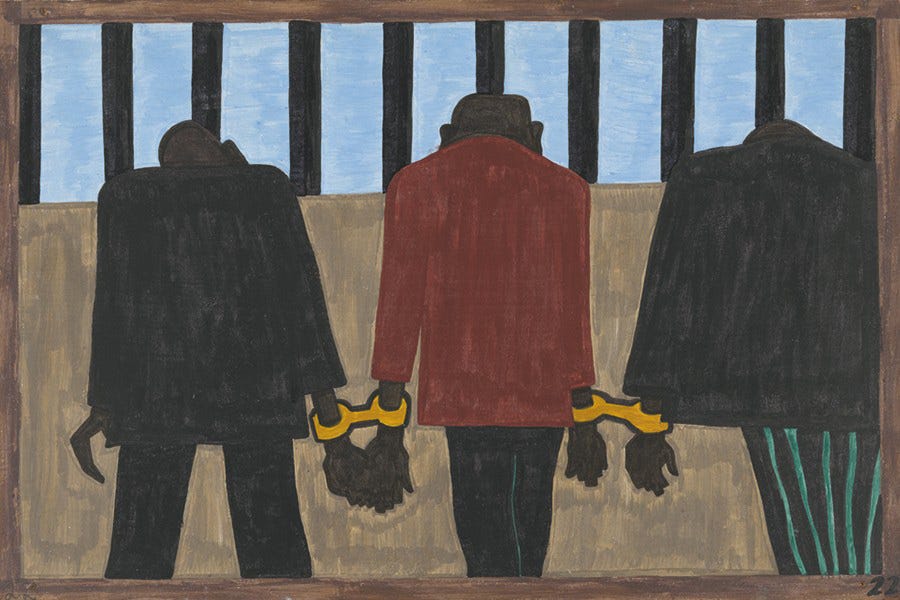
These casein tempera on hardboard paintings contain stylizations and a variety of symbols that aren’t typically found in visual journalism, but they are journalistic given the accurate representations of the emotional stories Lawrence heard as a child. As the son of Southern migrants, he was always conscious of people moving. For him it was personal.
“I think the motivation for painting ‘The Migration Series’ is that I grew up in a period where we all knew about it, we were a part of it, my family was a part of that migration. I grew up knowing about these things, from the first time I could understand what words meant. As we moved further north, I remember Atlantic City; we didn't stay there because we were on our way north. Then we moved onto Philadelphia, and in 1930 we arrived in New York's Harlem community. I was 13 years of age. It was a very vital, very energetic, very alive community. I used to hear my parents talking about another family arriving. People who had been there a year or so would take clothes to them, take coals to them for the furnace and things of that sort. So I grew up very conscious of people moving from one section of the country to the other.” - Jacob Lawrence
Lawrence developed a process and style he referred to as "dynamic cubism," an art form popularized by Picasso and Braque. He also drew inspiration from West African and Meso-American art and the Mexican School of Orozco, Rivera and Siqueiros.
Before painting the series, Lawrence researched the subject and wrote captions to accompany each panel. They are like sequential storyboards for a film. He saw the panels as one unit, painting all 60 simultaneously, color by color, to ensure their overall visual unity.
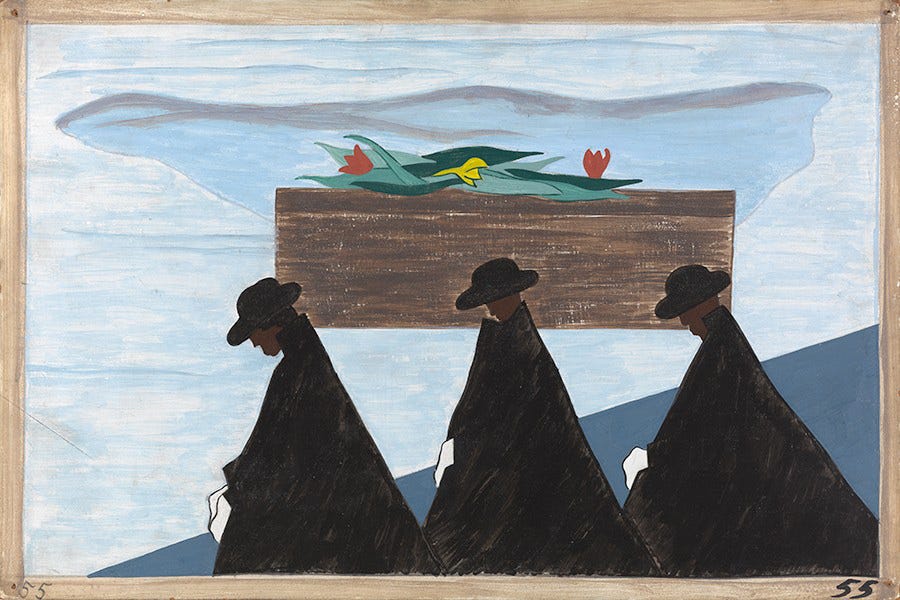
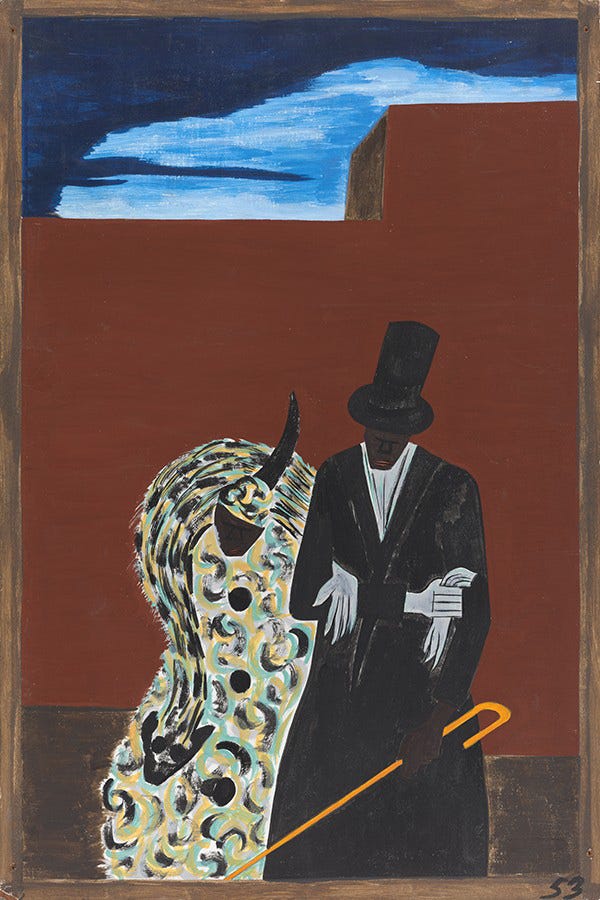
The compositions move. There is a visual poetry in their staccato-like rhythms and symbols of movement: the train, the station, ladders, stairs, windows, and the surge of people carrying bags and belongings.
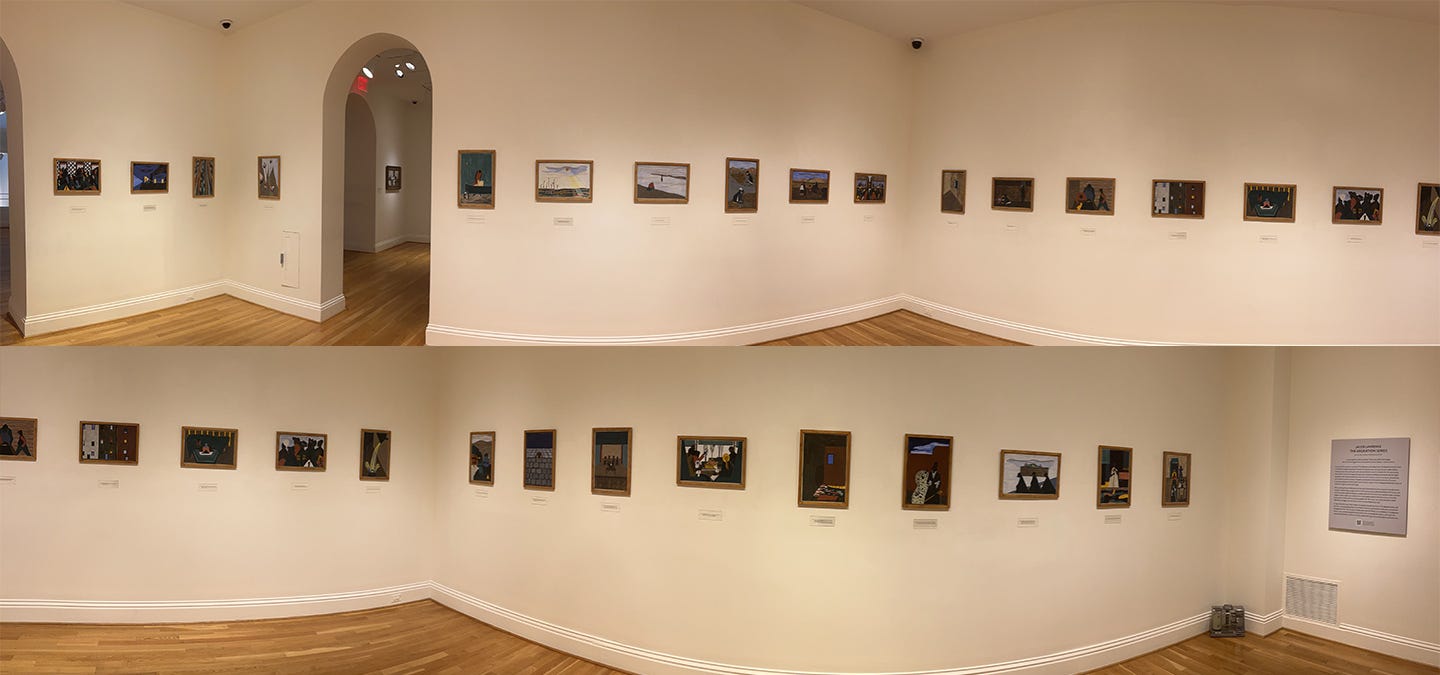
The paintings were shown publicly in a gallery exhibit, which brought him national recognition. This was a broad and complex subject to tackle in paint, one never before attempted in the visual arts. They were also controversial. Selections from this series were featured in a 1941 issue of Fortune magazine. In 1942 the entire series was purchased jointly and divided by the Phillips Collection in Washington, D.C., which holds the odd-numbered paintings, and New York's Museum of Modern Art, which holds the even-numbered.
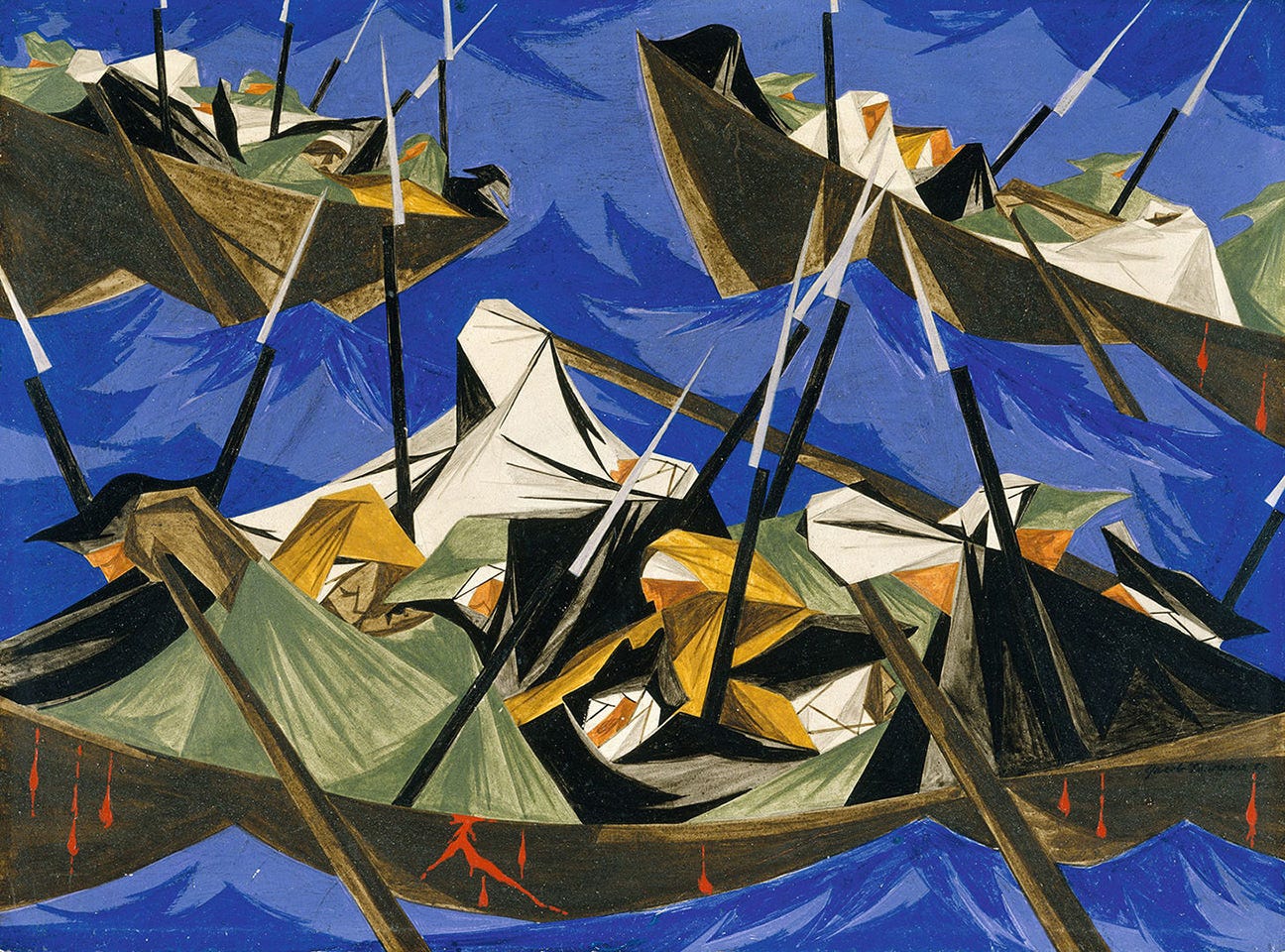
Lawrence continued his work as a visual chronicler of the African-American experience, including general depictions of everyday life in Harlem and other major series, including ‘War Series’ from 1946, and in 1956 a 30-panel series called ‘Struggle: From the History of the American People.’ He didn’t shy away from depicting these challenging themes of struggle, hope, triumph, and adversity.
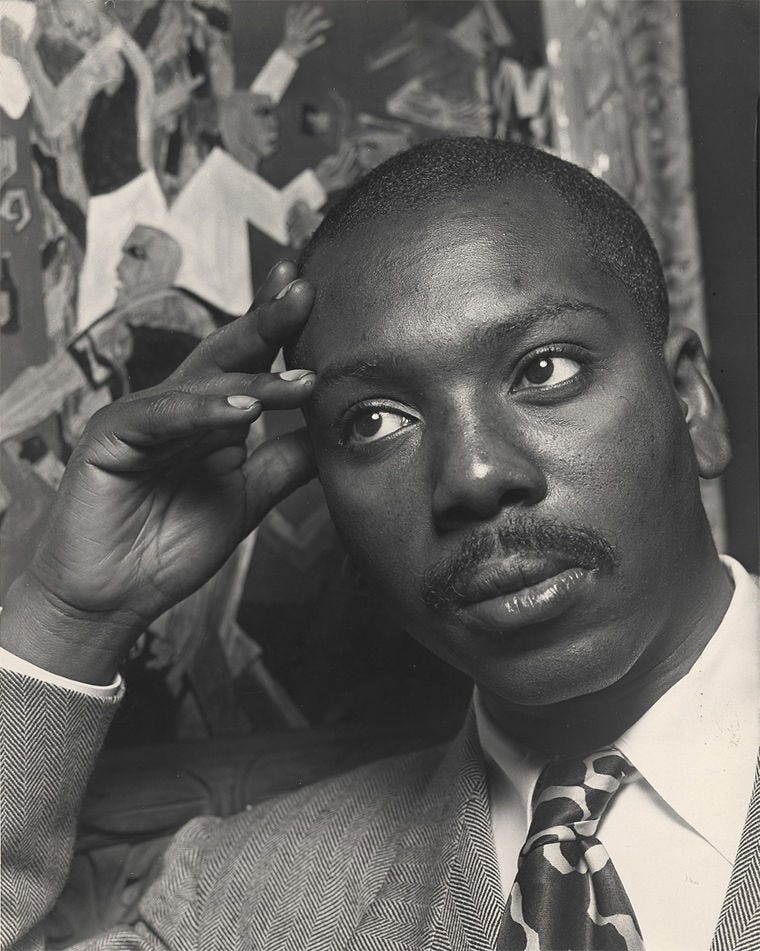
Lawrence's unique visual language shines a light on understudied chapters in American history, chronicling the Black experience that’s both humanistic and epic. Like a West African griot, he shares stories that connect the past to the present and future, inviting reflection on universal themes of struggle and migration. It’s an issue still worth engaging today.
More to Know:
View all 60 panels from ‘The Migration Series’ and hear stories that show the Great Migration's impact from a wide range of perspectives.
Learn more about the artist at The Phillips Collection.
There’s a wide selection of Jacob Lawrence works on WikiArt.
Here’s Lawrence’s bio at The National Gallery of Art in Washington, DC.
Here’s an interview with Jacob Lawrence about his Metropolitan Museum retrospective called ‘The American Struggle’.



Thank you for bringing to light this little-known history.
I appreciate learning about Jacob Lawrence, a visual griot. Thank you for filling in one of the holes of history. His is beautiful work!